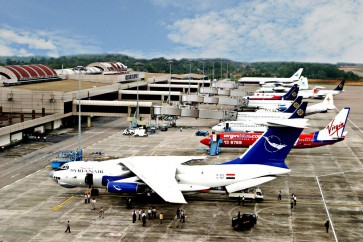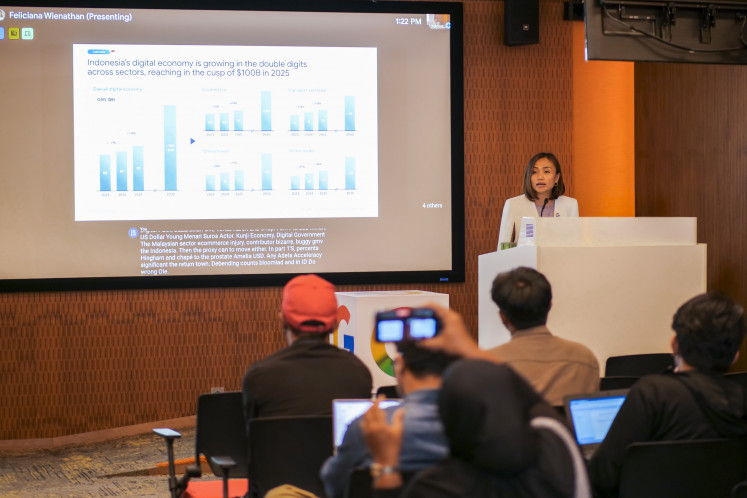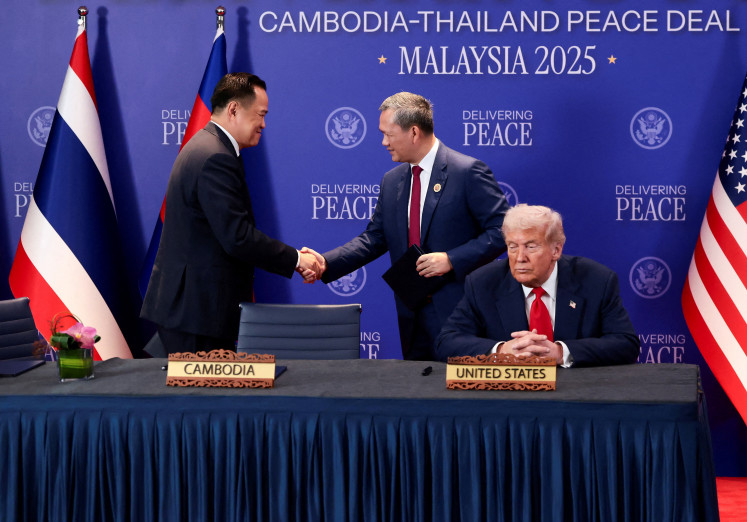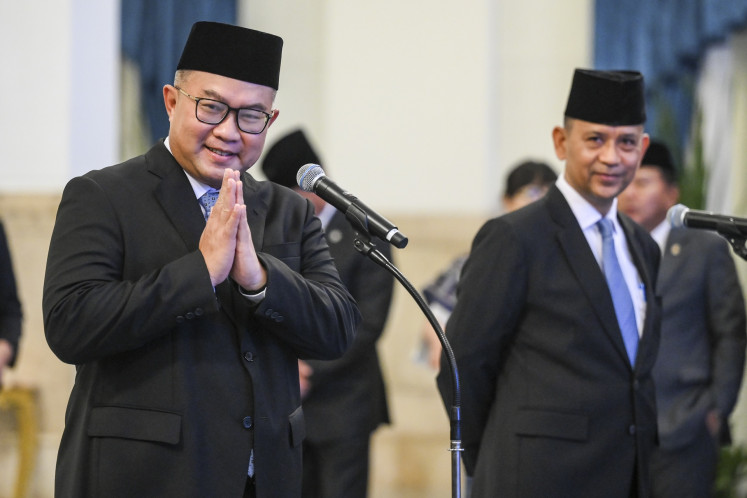Popular Reads
Top Results
Can't find what you're looking for?
View all search resultsPopular Reads
Top Results
Can't find what you're looking for?
View all search resultsRevitalizing the ‘old-fashioned’ museum into an engaging creative space
A thousand faces: A collection of wayang and masks is seen in the Basoeki Abdullah Museum in South Jakarta
Change text size
Gift Premium Articles
to Anyone
A
/span>
A thousand faces: A collection of wayang and masks is seen in the Basoeki Abdullah Museum in South Jakarta. (Courtesy of Basoeki Abdullah Museum)
Despite offering low entrance fees, many museums in the country struggle with low visitor numbers. A recent seminar shed light on how to make museums more appealing to the public.
The Museum, Art, and Education seminar held at Basoeki Abdullah Museum in West Cilandak, South Jakarta, induced a creative dialogue on a museum’s true potential in becoming a collective cultural space.
It posed the simple question of whether a museum was merely a place to exhibit historical items or if it had the power to serve a greater purpose.
Ali Akbar, a lecturer with the School of Cultural Sciences at the University Of Indonesia (UI) believes that a museum should follow a progressing world of art and education without eliminating the basic idea of displaying important items of learning.
However, the fact is that a museum is prone to losing visitors for being too simplistic and old-fashioned. As a result, a trip to the museum is only a one-time occurrence for many.
“If asked, ‘why don’t you want to go anymore?’ One would say, ‘well, I already know what’s in there’. This is because there is hardly anything new,” he said.

Mingling with the past: Students from Lagoa 03 state elementary school in North Jakarta visit the National Awakening Museum in Central Jakarta. (JP/Don)
Unfortunately, people’s interest comes second when it comes to operating a museum, which should symbolize the progress of a society and enable visitors to learn and communicate their knowledge to others after an educational and inspirational visit.
Ali suggested a concept he was most enthusiastic about; a community oriented space, underlining that a museum doesn’t have to continuously rely on history.
“This is a museum that is actively participating in displaying works that resonate with the public. Let’s say that drugs and riots are our main concerns. What is Basoeki Abdullah Museum’s part in documenting this issue?” he said.
Basoeki Abdullah Museum exhibits realist and naturalist paintings by the late painter himself. His work encompasses paintings featuring nature, everyday folk and important figures, which led to his appointment as a painter to the State Palace
Meanwhile, art curator Bambang Asrini Widjaranko said a museum should act as an educational room of art in promoting tolerance and diversity.
He highlighted major obstacles that restrain the freedom of expression, a vital element in art. For example, religious radicalism, with West Java having the highest number of intolerance cases. This is unfortunate, Asrini says, because art is a wondrous tool of expression.
“Art today could cover fiery issues that occur in a community, thus has the potential to be peeled,” he said.
Therefore, a museum could generate innovative concepts, encouraging established and aspiring artists alike to express themselves without fear.
“Surely we can use museums to combat intolerance and conflicts that arise due to other differences,” he said.
Eddy Fauzi Effendi with Jakarta State University’s School of Languages and Art encourages museum managements to cooperate with schools to attract young visitors. Museum visits, he said, would be beneficial for both children and educators, who could be inspired to incorporate creativity into their teaching methods.
“So, we could not only educate about art but also through art. For example, we can learn mathematics with poems,” he suggested. “We must start instilling this enthusiasm in children so that visiting a museum becomes more of a need rather than a requirement,” he said.
Yudhi Soerjoatmodjo, the moderator of the discussion, said curators played an important role within the operations of a museum. A curator is of important standing within a museum as they hold the ability to create dialogue with visitors.
The curator and producer of theater performance Akhir Pekan @ Museum Nasional or Weekend at the National Museum said visitors should ask themselves questions prior to visiting an exhibition in a museum or gallery.
“Before my involvement in curatorial [program], I would always try to place myself as a visitor at an exhibition or gallery. What do I want to experience in a photo gallery for instance? Do I pay a visit just to see an array of photos? Or do I want to engage in discussion with people?” he said.
Such questions, he said, helped him organize a program or formulate a concept.
— Cemara Dinda is an intern at The Jakarta Post










